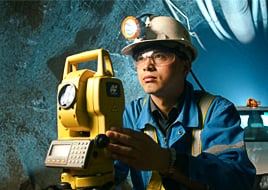Special Cases in Hazardous Areas

Category 3 devices
In contrast to Category 1 and 2 devices, potential hazards in the event of failure (e.g. short circuiting, connection break etc.) do not have to be considered for Category 3 devices (for use only in Zones 2 respectively 22). The device is evaluated only in respect of hazards during normal operation. It is relatively unlikely that the device should fail at the same time as a short-term explosive atmosphere is present. No EC Type Examination Certificate is therefore required for Category 3 operating devices. The manufacturer may confirm that the operating device complies with the relevant standard. Nonetheless, ecom Category 3 devices are usually tested by a certified centre and ecom is then awarded a declaration of conformity Type Examination Certificate.
(- Of course, Category 2 operating devices also offer significantly greater safety in Zones 2 respectively 22.)
Dust explosions - albeit of a mostly minor nature - occur relatively frequently.
A leaflet issued by the Government Safety Organisation of the Federal Republic of Germany states:

"According to documentation published by property insurers, it can be assumed that an average of one dust explosion per day occurs in the Federal Republic of Germany; around one in four of these explosions are caused by foodstuff or animal feed dusts."
Dust explosions are a world-wide problem. Between 1980 and 1990 in the USA, for example, some 200 serious foodstuff or animal feed related dust explosions were recorded, causing 54 deaths, 256 injuries and property damage amounting to 165 million US dollars.
Electrical operating devices represent only a small proportion of the ignition sources found to cause dust explosions – not least due to the safety stipulations in the regulations for erecting electrical plants in potentially-explosive areas.
With the introduction of the already outdated "Regulation on electrical equipment in explosive areas, ElexV" [1.4] in 1980, a type approval test certificate by a prescribed nominated body was legally required for electrical equipment intended for use in zone 10 (in zones 20 and 21 from 01/07/2003).
"Dust explosion-protected" operating devices, the surface temperatures of which lies below the acceptable limit for standardized dust thickness of 5mm, can, despite the existence of an official test certificate, become a danger source if, contrary to the conditions, they become covered or completely encased with a thick layer of dust.
Dust explosion protection therefore, more than gas explosion protection, depends on the correct device option, the application conditions and a regular monitoring and maintenance routine.